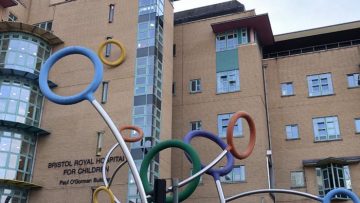Thursday 18th October 2001. The Geometry of Mediaeval Gothic Windows. A talk by Hugh Williams. 7.30 p.m. in Room JW1.12, James Went Building, City Site, De Montfort University, Leicester.
Friday 23rd November 2001. What can Cryptography provide besides secrecy? A talk by R.J. Lance. 7.30 p.m. in Room J001, Edward Herbert Building, Loughborough University.
Tuesday 22nd January 2002. Geometry Ancient and Modern. A talk by John Silvester (Kings College, London). 7.30 p.m. in James Went Room W1.12, City Site, De Montfort University, Leicester.
Abstract: Geometry, having all but disappeared from school syllabuses a generation ago, is currently undergoing something of a revival, and its teaching is the subject of a recent Royal Society/JMC report. This talk illustrates a number of approaches to geometry, by giving three quite different proofs of a nice theorem about three circles: (1) a proof that Euclid could have given but didn’t; (2) a proof by coordinates that never mentions x or y; and (3) a colourful 19th century proof involving cubics. (Complete with demonstrations using computer algebra and dynamic geometry packages.)
John has first-hand experience of teaching Geometry to first-year undergraduates at King’s College London, and is the author of a recent textbook (OUP, 2001) with the same title as this talk!
Thursday 21st February 2002. The Random Graph. A talk by Peter Cameron (Queen Mary College, London University). 7.30 p.m. in Room CM004, Main Building (a.k.a. George Eliot Building), Clifton Site, The Nottingham Trent University.
Abstract: According to Leibnitz, the best of all possible worlds is also the most probable. In striking agreement with this principle, Erdos and Renyi showed that there is a countably infinite graph R with the property that, if a countable graph is chosen at random (by selecting edges independently with probability ½), then it is almost surely isomorphic to R. Moreover, R has many interesting properties such as universality and a high degree of symmetry, and arises in contexts as different as axiomatic set theory and quadratic reciprocity.
Saturday 2nd March 2002. Branch Dinner at the Midland Hotel, Midland Road, Derby (opposite Derby Railway Station). Meet 7.30 p.m. in the Main Bar for a meal starting at 8.00 p.m.
The Branch Dinner is an informal event to provide a congenial atmosphere to meet with fellow members of the IMA and their guests. Many members will attend with their partners. Vegetarian or other special dietary requirements can be catered for with prior notice. Wines and other drinks are available on a cash basis.
Friday 15th March 2002. Juggling – Theory and Practice. A performance by Colin Wright. 7.30 p.m. in the Heap Lecture Theatre, University of Derby, Kedleston Road Site.
Abstract: Juggling has fascinated many for centuries. Seemingly oblivious to gravity, the skilled practitioner can keep several objects in the air at one time, and weave complex patterns that seem to defy analysis. In this talk the speaker demonstrates a selection of the patterns and skills of juggling while at the same time developing a simple method of describing and annotating a class of juggling patterns. By using elementary mathematics these patterns can be classified, leading to a simple way to describe those patterns that are known already, and a technique for discovering new ones. The talk is suitable for all ages. Those with some mathematical background should find plenty to keep themselves occupied, while those less experienced can enjoy the juggling and the exposition of this ancient skill.
The Speaker: Colin Wright graduated in 1982 from Monash University, Melbourne, Australia, with a B.Sc (Hons) in Pure Mathematics. He received his Ph.D. from Cambridge, England, in 1990, having learned on the way how to unicycle, juggle, fire-breathe and ballroom dance. He has worked as a research mathematician, a computer programmer and as a hardware designer, taking time out to lecture throughout the United Kingdom on “The Mathematics of Juggling.” He also enjoys sailing small boats and playing bridge, although not (so far !!) at the same time.
Friday 3rd May 2002. The Music of Numbers, Keyboards and Calendars. A performance by Professor Kevin Jones (School of Music, Kingston University). 7.30 p.m. at Repton School, Derbyshire.
Abstract: The pattern of white and black notes on the piano keyboard matches the pattern of long and short months in the calendar (with January equivalent to the note F). Is it significant? Musical tuning is a compromise between producing sweet sounding, harmonic intervals between notes, and establishing a system of “joined-up” harmony which can move seamlessly through related musical keys. This problem of musical temperament gives rise to the design of the ubiquitous, contemporary keyboard. Mathematically – speaking, in simple terms it reflects the fact that although no power of 2 is ever the same as a power of 3, there are some close matches at very significant points as the power-cycles move in and out of phase. These points themselves form a Fibonacci-type sequence as they converge to reduce the gap after cycles of order 5, 7, 12, 19, 31 etc. – numbers which have special significance in music theory and keyboard design. The juggling necessary to temper musical harmony is similar to that required to reconcile the mismatched cycles of the sun and the moon in the design of the calendar. Remarkably, the same series of numbers appears, but here resulting from the phase relationships of the celestial “spheres”. This fortuitous match between cosmic and musical phenomena has helped to shape cultures east and west, resulting in special religious or symbolic significance being attached to numbers from this sequence. In a cross-disciplinary quest, supported with musical demonstrations, Kevin Jones will explore some of the musical, mathematical, and cultural issues which attach to these intriguing number patterns.
Saturday 25th May 2002. Informal Visit to Woolsthorpe Manor (Birthplace and Family home of Sir Isaac Newton.) Meet 2.00 p.m. at Woolsthorpe Manor.
This informal event is to encourage local IMA members to visit the local attraction of Woolsthorpe Manor in the company of fellow IMA members and possibly to find a pub for a chat afterwards.
Woolsthorpe Manor is a small 17th– century manor house, the birthplace and family home of Sir Isaac Newton, who formulated some of his major works here during the Plague years (1665-67). An early edition of the Principia is on display. The Manor also houses a Discovery Centre and exhibition on work of Newton. The Manor orchard includes a descendant of the famous apple tree. The Manor is owned by the National Trust and entry is £3.50; child £1.70; family £8.00 or free to National Trust members.



